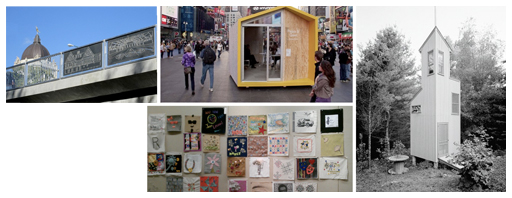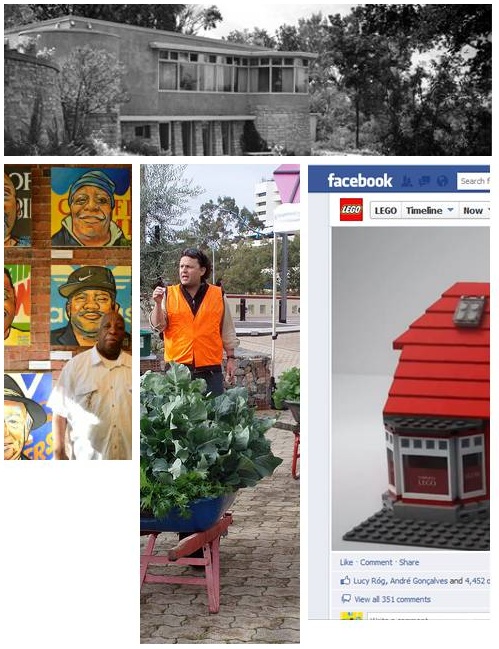
Pop-up for Veteran’s Day. Peace and Quiet, a temporary pavilion built in New York City’s Times Square by Matter Architecture Practice, was created as a “dialogue station” where veterans and civilians can openly engage each other in conversation in commemoration of Veteran’s Day.
Matter’s principals, Sandra Wheeler and Alfred Zollinger, proposed the pavilion as part of the Times Square Alliance’s Public Art Program’s call for proposals. The project was selected from 400 entries and funded through Kickstarter. The pavilion was set up on Veteran’s Day to Nov. 16.
Via Architect’s Newspaper Blog
Modernists at play. Paul Makovsky talks to children of mid-century architects and designers on what it was like growing up in a world surrounded by design.
“My mom was an artist and a children’s book illustrator, and my dad, who was an artist, designer, and theoretician, got a job teaching visual design in the architecture department at MIT. They designed a playroom in the house for me that had all these different kinds of “manipulatives,” as they would be called today. For example, there was a clock with cork balls on it, and you could remove the balls and count them, so subliminally it taught you about time and counting, but it was also a beautiful object.” – Daughter Julie Kepes of designers György and Juliet Kepes
Diversity quilt. Stephanie Spann, a structural engineer at HOK, blogs about Diversity Week in St. Louis, with a special focus on the diversity quilt being made in the office.
The quilt represents the “joining of small pieces of fabric as a whole allowing us to see how each individual square is integral to the completed quilt”. The project started in July, when the drive for squares began and another group donated old fabric samples.
Via HOK Life
Places that make one happy. Hazel Borys, principal and managing director of PlaceMakers, reflects on the Urban Happiness series that examines how happiness and health are generated or depleted by the way neighborhoods, towns, cities, and rural landscapes are developed.
Borys talks about how places that generate the highest levels of mental and social well-being are the outcomes of creative placemaking, such as local farming, artisanal food production, field-to-fork dining, and local art making.
Via PlaceMakers


